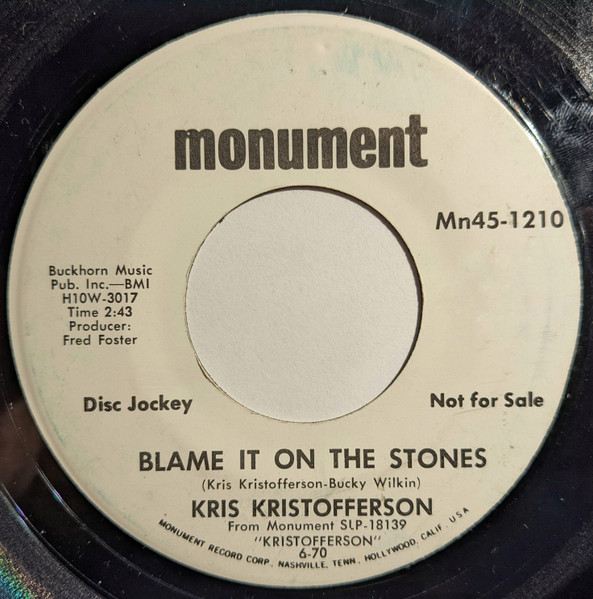
About the Song
Blame It On The Stones: A Song of Generational Divide and Societal Anxiety
Kris Kristofferson’s “Blame It On The Stones” is a poignant ballad that captures the generational divide and societal anxieties of the late 1960s and early 1970s. Released in 1970, the song’s lyrics paint a vivid picture of a society grappling with rapid social and cultural change, personified by the rise of counterculture movements and the popularity of rock and roll music, particularly that of the Rolling Stones.
The song opens with a setting that is both familiar and evocative: a bridge club meeting, where older women gather to discuss their daily lives. “Mother tells the ladies at the bridge club every day,” Kristofferson sings, “Of the rising price of tranquilizers she must pay.” This seemingly mundane detail sets the stage for the underlying tension that permeates the song – the fear and anxiety of an older generation struggling to understand and cope with a rapidly changing world.
“And she wonders why the children never seem to stay at home,” Kristofferson continues, highlighting the widening gulf between generations. The younger generation, drawn to the rebellious spirit and electrifying energy of rock and roll, is seen as a threat to the traditional values and way of life that the older generation holds dear.
The song then shifts to the perspective of a father, “working all the time,” who is “Trying to make the secretary change her little mind.” He is “Bothered by the news about so many broken homes,” a reflection of the societal upheaval caused by changing gender roles and the erosion of traditional family structures.
Kristofferson masterfully weaves these individual narratives together, creating a tapestry of shared anxieties and unspoken accusations. The “Rolling Stones” become the scapegoat, a symbol of everything that the older generation fears and misunderstands. “Blame it on the Stones,” the chorus implores, “Get it off your shoulders, blame it on the Stones.”
In a broader sense, “Blame It On The Stones” can be seen as a commentary on the scapegoating mentality that often arises in times of social unrest. When faced with complex and challenging issues, it is easy to blame external factors rather than confront the deeper causes of our anxieties.
The song’s relevance extends far beyond the specific era in which it was written. The generational divide and societal anxieties that it captures are timeless, recurring themes in human history. “Blame It On The Stones” serves as a reminder of the importance of understanding and empathy in bridging the gaps between different generations and perspectives.